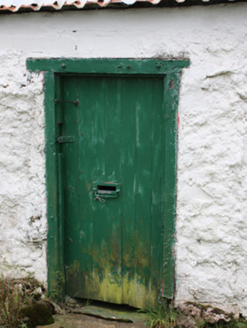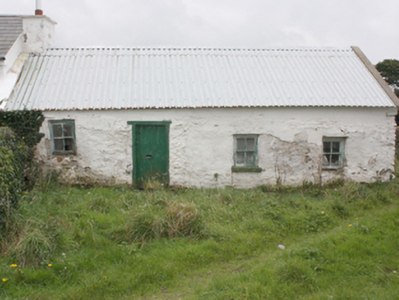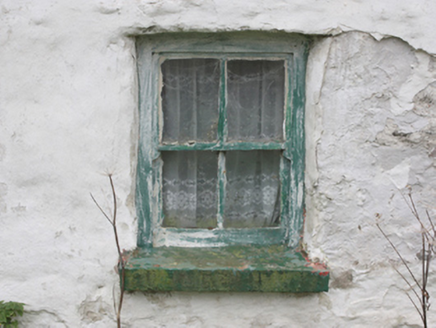Survey Data
Reg No
40901255
Rating
Regional
Categories of Special Interest
Architectural
Original Use
House
In Use As
House
Date
1770 - 1790
Coordinates
260097, 447249
Date Recorded
25/09/2008
Date Updated
--/--/--
Description
Attached four-bay single-storey vernacular house, built c. 1780. Pitched corrugated-metal roof with smooth rendered chimneystack with terracotta pot to west gable. Formerly thatched. Whitewashed rubble stone walls with concrete brick repairs to rear elevation. Square-headed window openings with two-over-two horned timber sash windows and stone sills. Square-headed door opening with battened timber door. Modern single-storey dwelling (c. 2005) attached to west. Building constitutes one of a number of clachan-style vernacular and thatched dwellings in the former clachan settlement of Ballymagaraghy.
Appraisal
Although no longer in use as a dwelling, this appealing and relatively intact example of a vernacular house retains its early form and character, and is an appealing feature in the scenic rural landscape to the south of Culdaff, close to the coastline. Its integrity is enhanced by the retention of much of its salient fabric including timber sliding sash windows. Modest in scale, it exhibits the simple and functional form of vernacular building in Ireland. The corrugated-cement roof to the dwelling indicates that this building was formerly thatched. The form of this building suggests that this building is of the ‘direct entry’ type that is characteristic of the vernacular tradition in north-west Ireland. It is a good example of its type and serves as a valuable addition to the coastal settlement of Ballymagaraghy. The building's greatest merit can arguably be attributed to its place within a clachan settlement, as collectively these buildings constitute among the most complete example of such settlement pattern, once predominant in the Inishowen area. This house represents a fine surviving example of a once ubiquitous building type in the rural Irish countryside, and is a valuable addition to the vernacular heritage of County Donegal.





